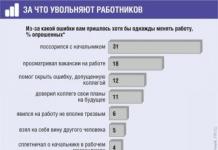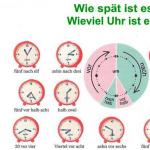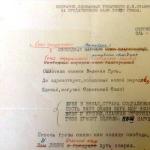In this article I was going to show how to make a balance sheet from SALT. However, having figured out how I would do this, I realized that I would start using accounting rules and terms. And I’m not sure that you and I will have the same understanding of them. So, I came up with this.
I am not interested in writing a purely theoretical article. I want to engage you so that together we can go from “reviewing SALT” to filling out the balance sheet.
For this I have my own approach: when giving new knowledge, I strive to ensure that there is a repetition of the previous ones. In other words, we repeat the knowledge that serves us as a support for new ones.
Note!
I would like to note that in this series of articles about filling out a balance sheet, I will talk about general ideas, basic rules, and show how it is done. Together with me, you will go all the way to creating a balance sheet based on the OCB of a real enterprise.
So, let's go...
Here is the OCB of a working enterprise. In the previous article we prepared it for creating a balance sheet.
Here's what we should do now:
- download the balance sheet and open it
- In the “name” column, write the name of the account. No need to look at the chart of accounts. There is no need to achieve some exact match between the name of the account and what it is called in the chart of accounts. Just remember and write. It is enough that your name reflects the essence of the account. For example. I will call the 50th account “Cashier”. And in the chart of accounts it can be called “Enterprise Cash Office”.
- in the “AP” column for each account, indicate what it is, “A – active account”, “P – passive account” or “AP – active-passive account”. Clue: Active accounts are those that store information about what the company has and this is “what” helps the company work and earn money. Usually “it” can be touched. Active accounts always have a debit balance or zero. Liability accounts are the debts/obligations of our company. This is simply information about the amounts owed. Passive accounts always have a credit balance or zero.
Of course, putting down “A, P and AP” is not an easy task. This requires knowledge and some reflection. I agree that there are invoices where you can issue them right away, and somewhere you can use a hint and enter the required characteristics. In any case, put it where you can do it. And fill in the remaining empty cells according to the chart of accounts. Download the chart of accounts.
Once you solve the problem, compare it with what I did.
Some General Rules and Observations
I assume, reader, that you remember that accounting accounts collect and store information about the activities of a business. All information is separated according to certain criteria. So, the code and name of the accounting account serves as a separation criterion. As a result, OSV shows all the accounting accounts involved in our enterprise. From the OSV we see what information has been collected.
However, balance sheet collects enterprise information differently.
Firstly, the balance sheet divides information into ASSETS and LIABILITIES.
Secondly, within ASSET and LIABILITY, information is divided into certain groups. Each such group is an economic indicator.
Ultimately, SALT is simply regrouped on the balance sheet.
- All debit balances, and these are accounts with characteristic A, go to the “ASSET balance” section
- All credit balances, and these are accounts with characteristic P, go to the “LIABILITY” section of the balance sheet.
- Accounts with the AP characteristic are transferred to the balance sheet as follows: if there is a debit balance, it goes to an ASSET, if there is a credit balance, it goes to a LIABILITY.
The amount received in ASSET or LIABILITY is entered into the specific name of the economic indicator. The basis for including the amount in the economic indicator will be the name of the accounting account, or, when it is not clear, we will use the law on filling out the balance sheet. Well, we will start filling out the balance very soon.
Fixed assets and intangible assets when filling out the balance sheet
Fixed assets are inextricably linked with such a concept as depreciation (accounted for in account 02). Depreciation is a gradual decrease in the initial cost of an asset associated with the operation of the asset. The depreciation process for fixed assets occurs over a certain period of time, but more than a year. As a result, everything will come to the point that the amount of depreciation will be equal to the original cost of the operating system.
Look at SALT. Account 01 records the amounts of all fixed assets at their original costs. Account 02 takes into account the depreciation amounts of these fixed assets. Now you are asking yourself, what does this have to do with the balance sheet?
It would seem that according to the rules for posting amounts from SALT to the balance sheet, we must send the amounts from the 01st account to the ASSET, and send the amounts from the 02nd account to the LIABILITY of the balance sheet. However, there is an exception for Fixed Assets.
Its essence is that before sending the amount to the balance sheet, we take the amounts from 01, subtract the amounts from 02 and send the resulting amount to where????
IN THE ASSET balance. Because depreciation can never be more than the original cost of the asset, and therefore the difference between 01-02 will always be a debit. 01 account (A) > 02 account (P). Well, in extreme cases, it will be 0.
Exactly the same situation with accounts 04 and 05. This takes into account the assets of an enterprise that do not have a physical object, like a machine or a machine.
Account 04 takes into account such enterprise assets as licenses, the exclusive right to a patent, the exclusive right to software, etc.
Their shelf life is also more than 12 months and they are not intended for resale. Everything is the same as with the OS. Depreciation of Intangible Assets (IMA) is accounted for on account 05.
CONCLUSION
To finish this article, I propose to do a practical task. We'll work a little with the numbers from the OS. The task is:
- divide your sheet in a notebook or notepad into two columns: “Asset” and “Passive”
- from SALT we will work with the column “Balance at the beginning of the period”
- according to all the rules studied in this article - write out the accounting accounts and amounts, what can be classified as “Asset” and what can be classified as “Liability”
- In each column, calculate the total of all amounts
- compare the total amount of “Asset” and the total amount of “Liability”
To complete the task, you already have previously downloaded OSV. If you haven't downloaded it yet, download it here.
Perhaps now we are ready to fill out the balance sheet. We will do this in the next article. I invite you.
P.S.
I can't get this article out of my head. There is some feeling of incompleteness, or something. The goal is clear - to lead you, the reader, to filling out the balance. Make sure you are as prepared as possible for this action. And, although I have to try to make the explanation understandable, there is still something missing in this article.
I understand that there will still be questions, but I want to keep them to a minimum. I think that I will answer some of these questions in advance. Before we get started filling out the balance sheet form, I suggest working with SALT a little more.
This is what we need to do.
- we continue to work with the first column of SALT - “opening balance”
- write down the invoices that you believe collect information about our company's debts. You can immediately start writing out those bills that you know are in SALT. You can go the opposite way - cross out those accounts that are responsible for the company’s property, for what you can touch. The remaining bills are what you need.
- Issued invoices have amounts in “Debit” or “Credit”, or even both. Write out an invoice, each amount, and write what kind of debt it is - “Do our company owe” or “Our company owes”
- Remember how in accounting they are called “Debt to our company” and “Our company owes”. In parentheses for these names, write accounting terms for each amount. For tips, read this article.
Once you do it, compare it with what I got.
Source: http://buhucheba.ru/osv-for-buhgalterski-balans/
Balance sheet
Definition 1
The balance sheet is a register that reflects the turnover of accounts and subaccounts of accounting for a certain reporting period.
The balance sheet is a table that consists of six columns.
The first two columns show the balances of the accounting accounts at the beginning of the period. The first column contains the debit balances of the accounts, and the second column contains the credit balances of the accounts (for example, as of January 1, 2017). The total amounts of the debit and credit balances of the accounts must be equal.
The third and fourth columns reflect the turnover for the period (for example, January 2017). In the third column are the turnovers on the debit of accounts, and in the fourth column - the turnovers on the credit of accounts. The total amounts of turnover in the debit and credit accounts must be equal.
The fifth and sixth columns reflect the balances of the accounting accounts at the end of the period (for example, as of January 31, 2017). The total amounts of the debit and credit balances of the accounts must be equal.
Thus, the balance sheet demonstrates turnover for a certain period and balances on all accounting accounts, which reflects the property and financial position of the organization as of a certain date.
Try asking your teachers for help
Such a statement can be compiled for any period: day, week, month, year, etc.
Formation of balance
Definition 2
The balance sheet of an enterprise is a report on the property and financial position of an organization for a certain period.
The balance sheet is divided into two parts: an asset, which reflects the organization’s property, and a liability, which reflects the sources of such property.
Asset and Liability must be equal and therefore the rules for forming a balance sheet are similar to the rules for forming a balance sheet. In fact, the balance sheet is drawn up precisely on the basis of the data in the fifth and sixth columns of the balance sheet. And the data in the first and second columns is reflected in the balance sheet as data at the beginning of the period.
As a rule, turnover on debit accounts constitutes an asset on the balance sheet, and turnover on credit constitutes a liability on the balance sheet. Balance sheet lines in some cases represent a grouping of several accounting accounts, and in some they contain data from turnover in one account.
For example, the line “Fixed Assets” contains data from the turnover of the same name account 01 “Fixed Assets”. That is, this line reflects the balance of the value of fixed assets at the end of the period. The line “Cash” contains a grouping of data for all cash accounts. These are accounts 50, 51, 52.
That is, if there are 1,530 rubles left in the enterprise’s cash register at the end of the period. and there are 45,874 rubles in the current account, then the following amount will appear in the “Cash” line of the balance sheet:
1530+45874 = 47404 rub.
However, not all debit turnovers fall into the balance sheet assets. For example, in the fixed assets line, their residual value is indicated minus depreciation. That is, the deductions themselves are not indicated separately in the balance sheet.
In the “Accounts receivable” line, information about the debt of buyers for payment and the debt of suppliers for supplies can be grouped.
The same applies to the liability side of the balance sheet. In the line “Retained earnings (uncovered loss)”, in the event of a loss, that is, the debit balance of account 84, this indicator is reflected with a (minus) sign in the liability side of the balance sheet.
Note 1
Guided by the given rules for forming a balance sheet from the turnover balance sheet, a balance sheet is drawn up and the totals of its assets and liabilities must be equal, although they will not coincide with the totals of turnover from the turnover balance sheet.
is a form of reporting on the financial and economic activities of a modern enterprise. BB is a table that reflects the financial performance of an enterprise. These indicators are reflected for the year of the current report and for the two years preceding it. In this article we will look at the basic rules and step-by-step instructions for filling out a balance sheet using an example.
Download the form Balance sheet (form 0710001) possible by .
Simplified form of Balance available at .
The easiest way to fill out a balance sheet is to fill it out using the organization’s balance sheet. The formation of SALT is based on the use of the double entry method, which allows you to monitor the correctness of business accounting. The SALT debit turnover is always equal to the credit turnover. SALT is the most visual summary of the turnover and balances of an enterprise for a certain period.
An example of a balance sheet in the popular 1C program:

Before the balance sheet is formed, all operations to close the reporting period are performed.
The chart of accounts was approved by law in 2000. Until that time, to record the economic activities of organizations, the old PS was used, which no longer met the requirements of life.
The balance sheet asset contains data about the assets of the enterprise, that is, about property and intangible assets that are capable of bringing economic benefits to the enterprise in the future.
Assets
Assets are divided into current and non-current.
Current assets are assets used in the process of economic activity and reflected in the financial result for the period in full.
Non-current assets - property that an enterprise uses for a long time; its cost is transferred to the financial result in parts during the period of use.
Accounts receivable, that is, the debt of counterparties to the organization, is also included in the assets section.
Passive
The liabilities side of the balance sheet reflects the sources of funds from which its assets are formed. This:
- the organization's own funds (capital and reserves);
- short-term and long-term liabilities.
Liability data shows the legal position of the enterprise.
Balance currency
The totals of assets and liabilities (balance sheet currency) must be equal.
Balance example

To balance the static type, items are filled out according to accounting data as of the date of preparation of this report. That is, the usual static balance sheet is a snapshot of the company’s financial indicators at a selected point in time—the end of the reporting period. Static balance is of interest to regulatory authorities.
To conduct an internal assessment of the state of the enterprise, a dynamic balance can be used. It can be formed on any desired date, and the difference between an asset and a liability shows the state of the organization.
An asset less than a liability means that the company would not have enough money to pay its own current liabilities. This amount will be reflected in the balance sheet liability with a minus.
The excess of an asset over a liability means that if the enterprise were liquidated at that moment, there would be profit left that would need to be transferred to the owner. Therefore, this amount will be reflected in the liability side of the balance sheet.
Balance Sheet Items
BB articles provide details of asset and liability indicators. The detailing option approved by the Ministry of Finance of the Russian Federation in 2015 is recommended, but not mandatory for use. An enterprise has the right to develop its own clarifying breakdown if it believes that it will allow it to more accurately reflect information about its activities.
One of the reports that an organization must submit to the tax office is a balance sheet. This report is compiled for the calendar year. The balance sheet has Form No. 1 of the financial statements, you can look at it by downloading the Balance Sheet Form 1 from the link below. This form of balance is relevant today.
Dashes are placed in empty lines of the balance sheet. All amounts presented in the balance sheet are rounded to the nearest thousand or to the nearest million; there are no decimal places. All foreign currency is converted into rubles at the exchange rate of the Central Bank of the Russian Federation on the date of the report.
A balance sheet can be drawn up at any date (usually the beginning of a quarter or year) to check whether the company’s accounting is being kept correctly. This report consists of two parts (pages): assets and liabilities of the enterprise. Based on the results of the balance sheet, the total amount of assets should be equal to the total amount of liabilities; if this equality does not exist, then an error has crept into the balance sheet and you will have to look for it.
How to fill out the balance sheet form No. 1?
This report is prepared on the basis of the balance sheet.
Sample balance sheet form 1
The form consists of a “header” and two tables: assets and liabilities. Let's fill in each part of the balance sheet sequentially.
Fill out the header:
At the top we indicate on what date the balance sheet is drawn up. We will give an example of the organization Confectioner LLC, which reports for the calendar year 2012.
In the line “organizational and legal form” we write LLC, “form of ownership” - private, also here you need to note the corresponding property codes: OKFS, OKOPF. For LLC - code 65. For private ownership, the corresponding code is 16.
All numerical entries in the balance sheet will be expressed in thousands; accordingly, in the “unit of measurement” line of the balance sheet we will indicate the code 384. For millions of rubles, the corresponding code will be 385.
In the last line of the “header” we indicate the legal address of the organization, that is, the address where it is officially registered.
We fill out the “Assets” table of the balance sheet:
This table consists of two sections: non-current assets and current assets. As mentioned above, to fill out Form 1 we will use the data from the balance sheet.
Opposite each type of asset (in the balance sheet these are called balance sheet items) the corresponding amount is written, rounded (for our case) to thousands of rubles. The first column indicates data as of the reporting date of the reporting period (for our sample, 12/31/2012), the second column - data as of the end of the previous year (12/31/2011), the third column - data as of the end of the year preceding the previous one (12/31/2010). ).
Section I Non-current assets Form 1: (click to expand)
- (1110): the residual value is indicated, obtained as the difference between the accounting value of intangible assets (debit 04 “Intangible assets) and accrued depreciation (credit 05 “Amortization of intangible assets”), the data from line 1120 is not taken into account here;
- research and development results (1120): data on completed research and development works (R&D), data for this article is taken from the account. 04 “Intangible assets” sub-account “R&D”;
- intangible and tangible exploration assets (1130-1140): data on search, exploration of mineral deposits, as well as on the equipment used for this.
- (line 1150): we also indicate the residual value obtained as the difference between the accounting value of the fixed assets (debit account 01 “Fixed Assets”) and accrued depreciation (credit account 02 “Depreciation”);
- profitable investments in tangible assets (1160): data on fixed assets accounted for in account 03 “Income-generating investments in tangible assets” are also determined by their residual value.
- financial investments (1170): the organization’s financial investments for a period of more than 12 months are indicated (composed of debit 58 “Financial investments” and debit 55 “Special accounts in banks” subaccount “Deposits”);
- deferred tax assets (1180): the balance of account 09 “Deferred tax assets” is taken;
- other non-current assets (1190): all other non-current assets that were not reflected in previous articles are indicated.
- Total for section I (1100): the values of lines 1110-1190 are summed up.
Section II Current assets form 1:
- inventories (1210): all inventories available to the enterprise are taken into account (data relating to raw materials is taken: account 10 “Materials”, 15 “Procurement and acquisition of material assets”; relating to: 20 “Main production”, 21 “Semi-finished products of our own” production", 23 "Auxiliary production", 28 "Defects in production", 29 "Service production and facilities"; relating to: 41 "Goods", 42 "Trade margin", 43 "Finished products", 44 "Sales expenses", 45 “Goods shipped”, as well as 97 “Deferred expenses”;
- (1220): the balance of account 19 “VAT on purchased assets” is indicated, that is, the VAT that was presented by suppliers, but not accepted for deduction;
- accounts receivable (1230): the amount of debt of counterparties to the organization, data is taken from accounts that record relationships with various counterparties: suppliers (account 60), buyers (account 62), personnel (70, 71, 73), tax office and PF (68 and 69), founders (75), other counterparties (76);
- financial investments (1240): investments for a period of less than 12 months;
- cash and cash equivalents (1250): all funds of the enterprise in rubles (account balance 50 and 51), foreign currency (account balance 52), checks, letters of credit (account balance 55 for subaccounts “Checks”, “Letters of Credit”);
- other current assets (1260): all other current assets that are not reflected in the previous lines are indicated;
- total for section II (1200): the sum of the values of lines 1210-1260.
Balance (1600): the data of lines 1100, 1200 are summed up.
We fill out the “Liabilities” table of the balance sheet, form 1:
The liability table of Form 1 consists of three sections: capital and reserves, long-term liabilities, short-term liabilities.
Section III Capital and reserves:
- (1310): credit balance of account. 80 “Authorized capital”;
- own shares (1320): debit balance of account. 81 “Own shares (shares)”;
- revaluation of non-current assets (1340): if the organization revalued intangible assets and fixed assets, then the amount by which the value of non-current assets increased (credit balance);
- additional capital without revaluation (1350): credit balance of account. 83 minus the amounts specified in line 1340);
- reserve capital (1360): if the organization creates reserve capital from retained earnings, then this data is reflected in this line (debit 82 “Reserve capital”);
- retained earnings (uncovered loss) (1370): data is taken from account 84 “Retained earnings (uncovered loss”).
- Total for section III (1300): the sum of the values of lines 1310-1370.
Section IV Long-term liabilities:
- borrowed funds (1410): (loan 67 “Settlements for long-term loans and borrowings”);
- deferred tax liabilities (1420): credit 77 “Deferred tax liabilities”;
- estimated liabilities (1430): credit 96 “Reserves for future expenses”, the period for fulfilling these obligations is over 1 year;
- other liabilities (1450): all liabilities not reflected above for a period of more than 1 year are indicated;
- total for section IV (1400): the sum of the values of lines 1410-1450.
Section V Current Liabilities: (click to expand)
- borrowed funds (1510): (loan 66), as well as long-term loans with a repayment period of less than 1 year (loan 67);
- accounts payable (1520): debt to suppliers (account 60), customers (62), personnel (70, 71, 73), budget (68 and 69). founders (75), other counterparties (76) for a period of less than 1 year;
- deferred income (1530): data from account 98 “Deferred income” (credit balance);
- estimated liabilities (1540): loan 96 “Reserves for future expenses”, maturity period less than 1 year;
- other liabilities (1550): all other short-term liabilities with a maturity of less than 1 year that are not reflected above are indicated;
- total for section V (1500): sum of lines 1510-1550.
Balance (1600): sum of line values 1400, 1500.
Upon completion of the balance sheet form 1, the values of lines 1700, 1600 must match. And this is logical. After all, liabilities are the sources of asset formation; each accounting entry (accounting entry) is made simultaneously as a debit to one account and a credit to another. If you have any discrepancies when filling out form No. 1, then you need to look for an error in accounting. The task is painstaking and long, but there is no other way out.
Video lesson “Balance sheet: form 1, examples, accounting basics”
Watch the video lesson from Natalya Vasilyevna Gandeva, a teacher on the “Accounting for Dummies” site, on the topic: “Balance Sheet”, where the basic principles of filling it out are described in detail. To watch the video click below ⇓
This page shows the balance sheet with accounts. The accounts are shown according to the chart of accounts, which is also available on the website. This balance sheet has been prepared to facilitate understanding of the relationship between the accounting accounts and the balance sheet figures. In contrast to the regulated form in which enterprises prepare reports, a column has been added to the balance sheet indicating the accounting accounts, the balances of which can be reflected in one or another line of the balance sheet. To make it easier to understand, added to some balance lines decoding "including". So, for example, as can be seen below, the concept of “inventories” includes raw materials, work in progress, goods, etc. In the approved balance sheet form, this is one line and filling it out for beginners causes great difficulties. If for a task it is necessary to fill out a balance sheet according to the approved form, then the “including” decoding lines must be summed up and the result included in the final line.
| ASSETS | |
| I. NON-CURRENT ASSETS | |
| Intangible assets | 04 - 05 |
| Research and development results | |
| Fixed assets | 01 - 02, 07, 08 |
| Profitable investments in material assets | 03 |
| Financial investments | 58, 59 |
| Deferred tax assets | |
| Other noncurrent assets | |
| Total for Section I | |
| II. CURRENT ASSETS | |
| Reserves | |
| including: | |
| Raw materials, supplies and other similar assets | 10, 15, 16 |
| Animals being raised and fattened | 11 |
| Costs in work in progress (distribution costs) | 20, 21, 23, 29, 44, |
| Finished products and goods for resale | 41, 42, 43 |
| Goods shipped | 45 |
| Future expenses | 97 |
| Other inventories and costs | |
| Value added tax on purchased assets | 19 |
| Accounts receivable | |
| including: | |
| Buyers and clients | 62, 76, 63 |
| Bills receivable | 62, 76 |
| Debt of subsidiaries and dependent companies | 58, 60, 62, 75, 76 |
| Advances issued | 60 |
| Other debtors | |
| Financial investments (excluding cash equivalents) | 58, 59 |
| Cash and cash equivalents | |
| including: | |
| Cash register | 50 |
| current accounts | 51 |
| foreign currency accounts | 52 |
| other funds | 55, 57 |
| Other current assets | |
| Total for Section II | |
| BALANCE | |
| PASSIVE | |
| III. CAPITAL AND RESERVES | |
| Authorized capital (share capital, authorized capital, contributions of partners) | 80 |
| Own shares purchased from shareholders? | 81 |
| Revaluation of non-current assets | |
| Additional capital (without revaluation) | 83 |
| Reserve capital | 82 |
| Retained earnings (uncovered loss) | 84 |
| Total for Section III | |
| IV. LONG TERM DUTIES | |
| Borrowed funds | 67 |
| Deferred tax liabilities | |
| Estimated liabilities | |
| Other obligations | |
| Total for Section IV | |
| V. SHORT-TERM LIABILITIES | |
| Borrowed funds | 66 |
| Accounts payable | |
| including: | |
| Suppliers and contractors | 60, 76 |
| Debt to the organization's personnel | 70 |
| Debt to state extra-budgetary funds | 69 |
| Debt to the budget | 68 |
| Advances received | 62, 76 |
| Other creditors | |
| revenue of the future periods | 98 |
| Estimated liabilities | |
| Other obligations | 75, 96 |
| Total for Section V | |
| BALANCE | |
Maintaining accounting records for a business entity involves filling out certain reporting forms for certain dates. The balance sheet occupies a special place in the financial statements, to which many regulatory and other bodies assign a leading role. Therefore, it is important to know how to fill out a balance sheet and which accounts go where.
The balance sheet is one of the financial reporting forms. The legislation establishes that all legal entities, regardless of their organizational form and the applicable taxation regime, must prepare and submit reports to tax and statistical authorities.
This obligation also applies to non-profit organizations and bar associations. Balance sheets and profit and loss statements do not have to be submitted only to entrepreneurs, as well as branches of foreign companies. But they can do this on their own initiative.
Attention! Previously, some organizations were exempt from preparing a balance sheet, but currently such provisions are no longer in effect. Business entities classified as small businesses are given the right to submit reports in a simplified form. It includes a balance sheet in form 1 and, therefore, enterprises must send it to the regulatory authorities.
Balance due dates
According to the general rules, the balance sheet - Form 1 must be submitted as part of the reporting for the past year no later than March 31 of the following year. This deadline must be observed when submitting balance sheets and other forms to the Federal Tax Service and statistics.
In addition, under certain conditions, an audit report must be sent to Rosstat as an attachment. The deadline is set for ten days, but no later than December 31 of the following year.
Some organizations need to submit financial statements and publish them due to the type of activity they carry out, or according to other criteria defined by law. For example, tour operators must send their reports to Rostrud within three months from the date of their approval.
The legislation provides for separate deadlines for organizations that registered after September 30 of the reporting year. Due to the fact that their calendar year may be determined differently in this case, the due date may be set by such organizations on March 31 of the second year after the current one. For example, Rebus LLC received an extract from the Unified State Register of Legal Entities on October 25, 2017; the accounting report must be submitted for the first time on March 31, 2019.
Attention! Accounting statements are usually submitted based on the total for the year. However, it is possible to present it quarterly. In this case it is called intermediate. Such documentation is very often needed when applying for loans from banks, company owners, etc.
Where is it provided?
The provisions of federal laws establish that Form 1 balance sheet and Form 2 profit and loss statement, and in certain cases other forms, must be submitted:
- Federal Tax Service - reporting must be submitted at the place of registration of the company. Therefore, branches and other separate divisions do not submit it, and only the parent company submits consolidated statements. This must be done at the place where it is registered, taking into account these departments.
- Rosstat - currently submitting reports to statistical authorities is mandatory. If this is not done, then, just as in the first case, the company and officials may be held liable.
- For the founders and other owners of the company - this is due to the fact that each annual report of the organization must be approved by its owners.
- To other bodies, if the relevant regulations define such a duty.
Attention! Banks may be asked to provide reporting when applying for various types of loans and borrowings from them. Especially if it is taken.
Currently, when concluding contracts, many large companies ask for Form 1 Balance Sheet, Form 2 Profit and Loss Statement. This should be done at the discretion of the company management.
However, at present, many specialized companies through which you can submit reports have a service that allows you to obtain all the necessary information about a partner according to his TIN or OGRN. This data is provided by the Federal Tax Service itself based on previously submitted reports.

After this, his TIN is indicated on the next line in the table. Next, you need to indicate the main type of activity - first in words, and then in a table using the OKVED2 code. Then the organizational form and form of ownership are indicated.
On the contrary, the corresponding codes are entered in the table, for example:
- The code for LLC is 65.
- for private property - 16.
On the next line you need to choose in what units the data in the balance sheet is presented - in thousands or millions. The table displays the required OKEI code. The last line contains the address of the subject's location.
Assets
Fixed assets

Line “Intangible assets” 1110 - account balance 04 (except for R&D work) minus account balance 05.
Line “Research results” 1120 - account balance 04 for sub-accounts that reflect R&D;
Line “Intangible search queries” 1130 - balance, subaccount of intangible costs for search work.
Line “Material search requests” 1140 – account balance 08, subaccount for the costs of material assets for search work.
Line “Fixed assets” 1150 - balance minus the balance.
Line “Income-bearing investments in MC” 1160 - the balance minus the balance of account 02 in terms of accrued depreciation on assets related to income-generating investments.
Line “Financial investments” 1170 - account balance 58 minus account balance 59, as well as account balance 73 in terms of interest-bearing loans over 12 months.
Line “Deferred tax assets” 1180 - account balance 09, it is possible to reduce it by account balance 77.
Line “Other non-current assets” 1190 - other indicators that need to be reflected in the section, but they are not included in any line.
The line “Total for section” 1100 is the sum of lines from 1110 to 1190.
Current assets

Line “Inventories” 1210 - the sum of indicators is entered in the line:
- account balance 10 minus account balance 14, or account balances 15, 16
- Balances on production accounts: 20, 21, 23, 29, 44, 46
- Balances of goods on accounts 41 (minus the balance on account 42), 43
- account balance is 45.
Line “Value added tax” 1220 - account balance 19.
Line “Accounts receivable” 1230 - the sum of indicators is entered:
- Debit balances and 76 minus the credit balance of account 63 for the subaccount “Reserves for long-term debts”;
- Debit balance on advances made for the supply of products and services.
- Debit balance, subaccount “Insurance settlements”;
- The debit balance of the account is 73, excluding the amounts of loans on which interest is accrued;
- Debit balance of account 58, subaccount “Granted loans for which interest is not accrued.”
- Debit account balance 75;
- Debit account balance 68, 69
- The debit balance of the account is 71.


















